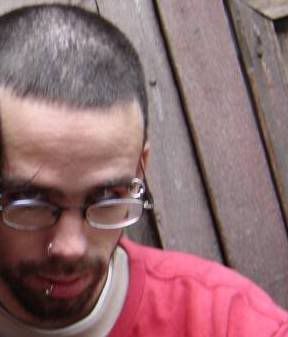It was difficult to get up early after la fiesta salvaje, but more difficult to not fall asleep, not because the presentation were boring, but because the whole meeting schedule catch me!
Torbjorn Ekrem try to produce “robust backbone trees” to perform phylogenetic analyses, but he uses a form of character elimination, so I don't like his idea.
Pancho Prevosti, works with a simultaneous analysis of otters, using morphology, molecules, and fossils.
Torsten Dikow shows a phylogenetic analysis of Asilidae robber flyes, into a context of disponible fossils of the group. And Johnatan Liria, uses morphometrical data, using TNT, to search the phylogeny of some particular Culicidae mosquitoes. For the moment, I feel really suspicious about the use of “warps” or “PCA” as characters!
Gabriel Ruá, explore several k values to choose a k value, and analyze a clade of Asteraceae. But I think that his use of a broad range of k values, made his inferences somewhat useless.
Tim Crowe, analyze a big data set to evaluate the position of some african quails, he shows that many identifications based solely on feather colors are plainly wrong. But I like his exposition of several song calls by these quails.
Using the large data set, Norberto Giannini examine some phylogenetic hypothesis of mammals, and found some interesting consequences! I like the way in which he present the results, and the good and problematic points of the study.
Gitte Peterson shows a weird behavior of his molecular data, and she connects it with paralogy, and mRNA edition. Although I think that there are better ways to attack the problem, I think that her exploration of the results was wonderful!
Then Kevin Nixon shows how some character codings used for the origin of seed plants, are highly problematic, because they are based on a preconception and a chain of errors in the description of some fossil material.
After lunch, Fabián Michelangeli gives a talk about a Melastomataceae clade, he uses molecular results, but also include a mapping of an initial set of morphological characters that he and his co-authors were working, and how this evidence to be added fit to the molecular results. I like the detailed working of his fruit characters! In the same line of Melastomataceae Renato Goldenberg talks about the preliminary results of a more inclusive project of this group of plants.
Pd. Although published few days after the meeting, this post was written the last day of the meeting. I not publish it before, because after the last talk, I like everyone, go out to celebrate the end ;).
Pd2. As part of the organization of the meeting, I want to thank every one for comming!! :D
Suscribirse a:
Comentarios de la entrada (Atom)

No hay comentarios.:
Publicar un comentario